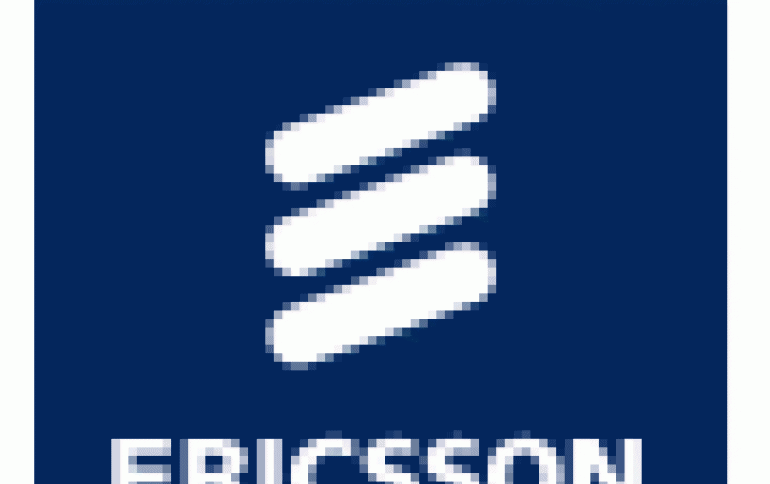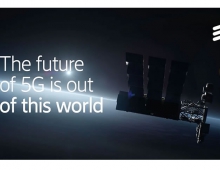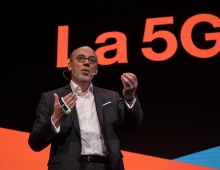
Ericsson Demonstrates Mobile Broadband 10 Times Faster
Consumers in Sweden were the first in the world to experience commercial LTE services. Ericsson on Tuesday demonstrated the next step of LTE, known as LTE Advanced, to the Swedish Post and Telecom Agency (PTS). The demonstration, held in Kista, Sweden, featured speeds more than 10 times faster than those currently experienced by LTE consumers in Sweden.
The system, based on commercial hardware, was operating on a test frequency provided by the PTS. This enabled Ericsson to demonstrate LTE Advanced functionality such as carrier aggregation of 3 x 20MHz (60MHz aggregated) over the air in a mobile environment for the first time.
Mr. Urban Landmark, Head of Spectrum Department of Swedish regulator PTS, says: "Sweden is in the forefront when it comes to usage of mobile broadband. Sweden was both early with licensing of harmonized spectrum in the 2.6GHz and 800MHz bands, and the first country in the world where LTE was commercially deployed. The demonstration today indicates that mobile broadband technologies continue to evolve rapidly."
LTE Advanced will further enhance the speed and capacity that will be needed in the Networked Society in the years to come. The technology is compliant with the 3GPP Release 10 global standard. Recently, the International Telecommunication Union (ITU) also selected LTE Advanced as one of the technologies that fulfills International Mobile Telecommunication's criteria. The first stages of LTE Advanced are expected to be in commercial operation in 2013.
"Ericsson encourages all regulators to allocate harmonized spectrum as early as possible," says Ulf Ewaldsson, Vice President and Head of Product Area Radio, Ericsson. "The next step of LTE enhances the current service offering, performance and data speed even further. It provides operators with the opportunity to capitalize further on their existing infrastructure. Once again, Ericsson is committed to supporting operators' needs as expectations and requirements for mobile broadband services increase."
The enhancements introduced with LTE Advanced include carrier aggregation and extended multiple-input, multiple-output (MIMO) functionality. From a user perspective, this means that information can be retrieved and sent much faster, even when the network is congested. This, in combination with the faster speeds, improves the user experience significantly.
The demo system was based on Ericsson's multi-mode, multi-standard radio base station, RBS 6000. Live traffic was streamed between the RBS and a moving van from which network performance could be monitored. In the demonstration, 60MHz of aggregated bandwidth was used, compared to the 20MHz maximum that is currently possible using LTE. In the downlink, 8x8 MIMO was used.
In 2010, the technology's first year of operation, the number of users with access to LTE networks rose from 0 to 150 million people. Ericsson supplied the majority of these commercial LTE networks and has signed contracts with six of the world's top seven operators ranked by 2010 global revenues.
Ericsson expects to hold 25 percent of all essential patents for LTE in the industry.
Japanese carrier NTT DoCoMo also tested out LTE Advanced earlier this year and similarly achieved peak data rates in the 1Gbps range.
The currently deployed version of LTE is essentially a bridge from 3G technologies such as HSPA and EV-DO Rev. A to the 4G technologies that the International Telecommunications Union has said will support average speeds up to 100Mbps.
In the U.S., Verizon became the first American carrier to commercially deploy the first generation of LTE technology last year covering roughly one-third of the U.S. population. The carrier plans to have its entire current 3G footprint upgraded to LTE by the end of 2013.
AT&T plans to start offering its own LTE services commercially this summer. So far, the carriers has tried to get more mileage through upgrading its current HSPA+ network. But while HSPA+ does deliver significantly higher speeds than legacy HSPA or EV-DO Rev.
Mr. Urban Landmark, Head of Spectrum Department of Swedish regulator PTS, says: "Sweden is in the forefront when it comes to usage of mobile broadband. Sweden was both early with licensing of harmonized spectrum in the 2.6GHz and 800MHz bands, and the first country in the world where LTE was commercially deployed. The demonstration today indicates that mobile broadband technologies continue to evolve rapidly."
LTE Advanced will further enhance the speed and capacity that will be needed in the Networked Society in the years to come. The technology is compliant with the 3GPP Release 10 global standard. Recently, the International Telecommunication Union (ITU) also selected LTE Advanced as one of the technologies that fulfills International Mobile Telecommunication's criteria. The first stages of LTE Advanced are expected to be in commercial operation in 2013.
"Ericsson encourages all regulators to allocate harmonized spectrum as early as possible," says Ulf Ewaldsson, Vice President and Head of Product Area Radio, Ericsson. "The next step of LTE enhances the current service offering, performance and data speed even further. It provides operators with the opportunity to capitalize further on their existing infrastructure. Once again, Ericsson is committed to supporting operators' needs as expectations and requirements for mobile broadband services increase."
The enhancements introduced with LTE Advanced include carrier aggregation and extended multiple-input, multiple-output (MIMO) functionality. From a user perspective, this means that information can be retrieved and sent much faster, even when the network is congested. This, in combination with the faster speeds, improves the user experience significantly.
The demo system was based on Ericsson's multi-mode, multi-standard radio base station, RBS 6000. Live traffic was streamed between the RBS and a moving van from which network performance could be monitored. In the demonstration, 60MHz of aggregated bandwidth was used, compared to the 20MHz maximum that is currently possible using LTE. In the downlink, 8x8 MIMO was used.
In 2010, the technology's first year of operation, the number of users with access to LTE networks rose from 0 to 150 million people. Ericsson supplied the majority of these commercial LTE networks and has signed contracts with six of the world's top seven operators ranked by 2010 global revenues.
Ericsson expects to hold 25 percent of all essential patents for LTE in the industry.
Japanese carrier NTT DoCoMo also tested out LTE Advanced earlier this year and similarly achieved peak data rates in the 1Gbps range.
The currently deployed version of LTE is essentially a bridge from 3G technologies such as HSPA and EV-DO Rev. A to the 4G technologies that the International Telecommunications Union has said will support average speeds up to 100Mbps.
In the U.S., Verizon became the first American carrier to commercially deploy the first generation of LTE technology last year covering roughly one-third of the U.S. population. The carrier plans to have its entire current 3G footprint upgraded to LTE by the end of 2013.
AT&T plans to start offering its own LTE services commercially this summer. So far, the carriers has tried to get more mileage through upgrading its current HSPA+ network. But while HSPA+ does deliver significantly higher speeds than legacy HSPA or EV-DO Rev.





















